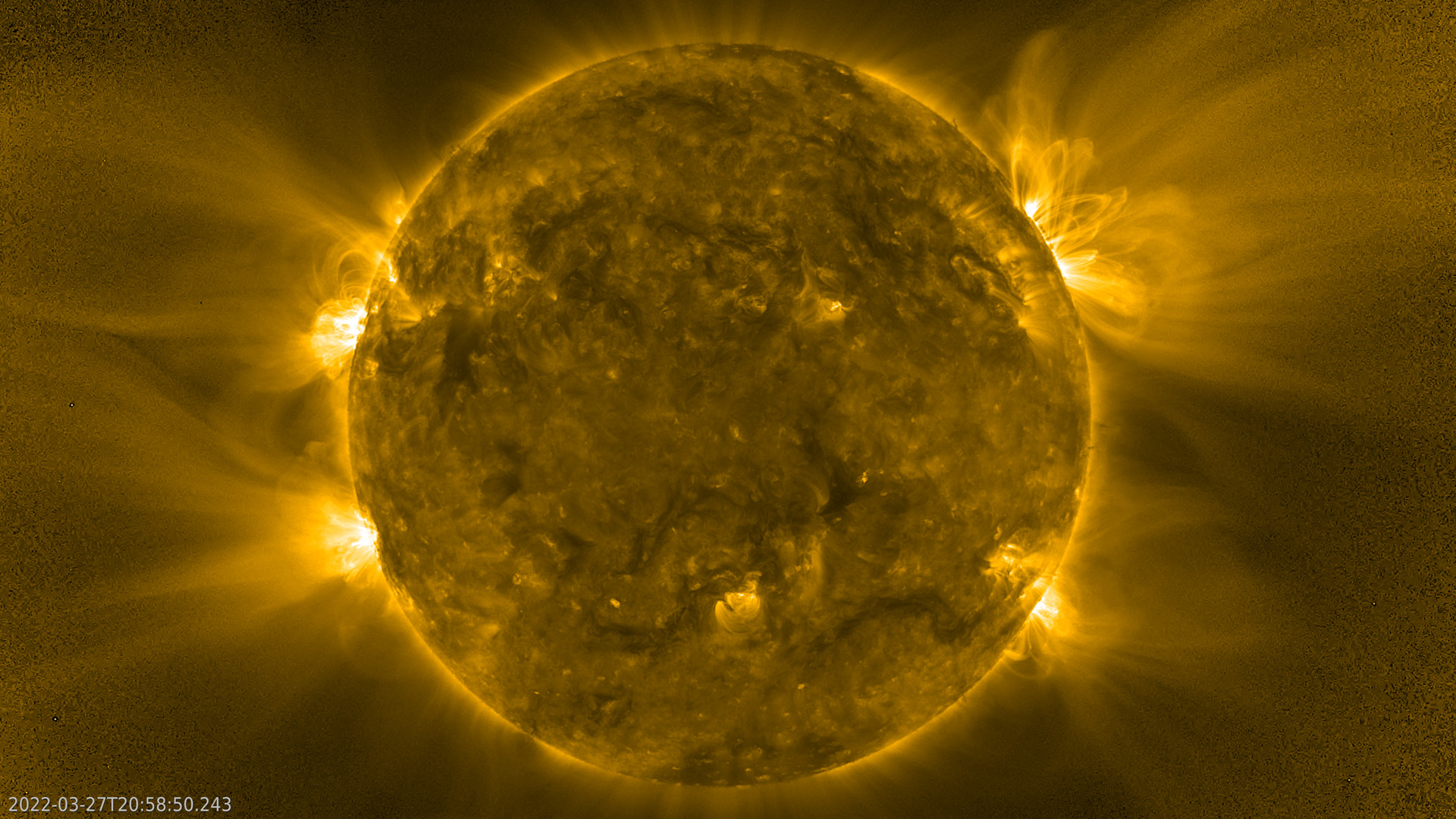Solar scientists have found tiny, short-lived jets of energy on our sun to be the primary drivers of the solar wind, marking a step toward decoding our star’s elusive behavior and, eventually, refining predictions of its storms.
The “solar wind” refers to pockets of energetic particles blasted out from the sun. These particles are occasionally directed toward Earth, like last summer when a rare cluster of such storms rained on our planet and sparked breathtaking auroras across the globe — likely the strongest auroras we’ve seen in centuries. The solar wind can also affect our planet in a negative way, however, such as through the disruption of GPS signals and other technologies that are reliant on satellite and radio communications; it can also threaten the safety of astronauts in Earth orbit.
Still, the precise origins of the solar wind have proven difficult to pinpoint. This is partly because the “footprints” carried by the charged particles in the wind — features that scientists suspect would reveal unique signatures of the regions on the sun that give rise to the solar wind — are often distorted by the time they reach Earth.

Previous research revealed that tiny jets emerging from large, dark gaps in the sun’s outer atmosphere, or corona, drive the fastest solar wind particles despite being a trillion times weaker than the sun’s most powerful flares and lasting no more than a minute. These so-called “picoflares” are ubiquitous and are powered by magnetic field lines that stretch into space rather than loop back to the sun’s surface, serving as cosmic highways that allow superheated plasma particles to escape the sun’s magnetic grasp and launch outward at hypersonic speeds.
“The energy content of a single picoflare jet that lives for about one minute is equal to the average power consumed by about 10,000 households in the U.K. over an entire year,” Lakshmi Pradeep Chitta of the Max Planck Institute for Solar System Research in Germany previously told Space.com.
However, scientists have found that tracking down the source of the slower component of the solar wind to be more difficult. Now, a new analysis by Chitta and his team, using up-close data from the European Space Agency’s Solar Orbiter spacecraft, provides compelling evidence that these picoflares are also supplying energy to the slower solar wind.
“We were very surprised to see that the same tiny plasma jets appear to be driving both the fast and the slow solar wind,” Chitta said in a recent statement. “Previously, we had assumed that different processes are at work.”
To reach their conclusions, Chitta and his colleagues studied data collected by Solar Orbiter in late 2022 and early 2023, when the spacecraft had made its scheduled close approaches to the sun. During these passes, the probe managed to get roughly 31 million miles (50 million kilometers) from our star, allowing its onboard cameras to capture high-resolution images of the jets in coronal holes as well as direct measurements of the solar wind.
By combining these observations, “the researchers could directly connect the solar wind measured at the spacecraft back to those exact same jets,” ESA wrote in a statement.
“This is the first time that we can say for sure that at least some of the slow solar wind also comes from tiny jets in coronal holes,” the agency added. Until now, the origin of the solar wind had been elusive.”
Forthcoming close approaches to the sun by Solar Orbiter, which occur roughly twice a year, could shed more light onto how the picoflares launch the solar wind, the statement read.
This research is described in a paper published Feb. 5 in the journal Astronomy & Astrophysics.
Article by:Source:
















